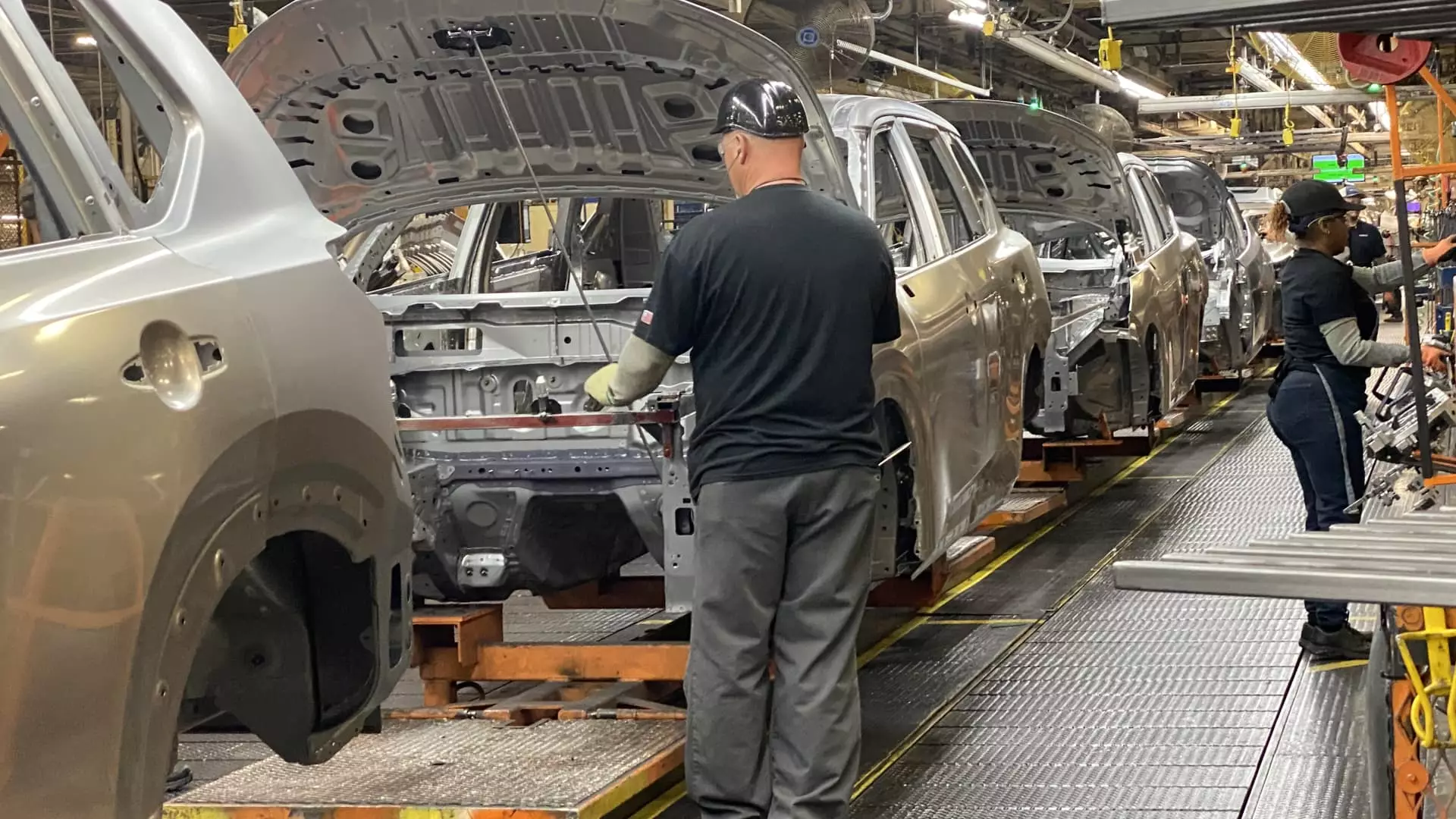The U.S. automotive industry is on a precarious cliff, swaying precariously in the winds of regulatory uncertainty. Following President Donald Trump’s recent executive order modifying automotive tariffs, the industry finds itself caught between the promise of potential relief and the harsh realities of ongoing levies that threaten its very foundation. Tariffs of 25% on imported vehicles are formidable, and although the executive order aims to soften the blow, the fear of additional costs continues to loom large.
Trump’s administration claims that the changes will ease the “stacking” of tariffs—specifically the extra 25% on steel and aluminum that an automaker already faces when importing vehicles. But is this genuinely sufficient? The added strain on the automotive supply chain threatens to ripple through every segment, pushing stakeholders toward a precarious brink while having an inadequate grasp on reimbursement mechanisms. A mere concession may not be enough for an industry already battling financial turmoil.
The Political Backlash: A Mixed Bag of Responses
The announcement was met with mixed reactions that epitomize the current political climate. It is a delicate balance, as six major automotive policy groups have banded together to lobby for a reduction in tariffs, citing the looming risk of jeopardizing U.S. automotive production. This unified front reveals a palpable sense of urgency amongst auto manufacturers—a level of distress that could imply a deeper trouble brewing below the surface.
Indeed, stakeholders are feeling the squeeze, with companies like General Motors altering strategic plans and foregoing stock buybacks. This inconsistency in government policy shines a spotlight on the volatility that businesses face in an environment characterized by unpredictable tariff shifts. As the industry clamors for steady ground, the question arises: is the executive order enough to restore faith in long-term investments?
Calculating Risks and Reimbursement Confusion
One of the most significant changes in Trump’s order is the potential for partial reimbursements for vehicles assembled in the U.S. The offer sounds promising at first glance—providing examples of rebates based on calculations of 3.75% and 2.5%. However, the convoluted nature of how these reimbursements will actually work raises eyebrows. For automakers, navigating reimbursement claims amid deceptively complex tariffs is murky and fraught with uncertainty.
More importantly, what good is a partial reimbursement when the costs of parts themselves continue to rise? Although the intention is to foster a stable environment for production, the fact remains that the roads to reimbursement are rarely straightforward, and this complexity could dissuade investment when the risk of significant financial consequences remains ever-present.
Public Sentiment: A Need for Clarity and Stability
Trump’s proclamation during a Michigan visit—”We will slaughter them if they don’t bring the parts back to the U.S.”—signifies a mindset that touts aggressive measures aimed at reviving American manufacturing. Yet, threats aside, it’s the push for clearer guidelines and a long-term vision that resonated with the audience. While auto manufacturers are reluctantly hailing the modest amendments, there’s a profound understanding that significant challenges lie ahead. The industry craves stability and clarity more than mere positive sentiment.
Additionally, as the sentiment within the industry transpires, it’s crucial to genuinely cultivate a favorable climate for manufacturers. The constant shuffling of tariffs only fuels an atmosphere of resentment as firms attempt to navigate these rapid pivots that leave them unsure of their footing. Therefore, building a more predictable and consistent policy framework would be a hallmark of transformative change rather than the status quo of uncertainty.
Bold Leadership Needed for Industry Growth
In the face of these challenges, leaders in the automotive sector—including the likes of Ford and GM—have expressed hope that the modifications could lead to a more competitive market. The corporate loyalty and appreciation for the president’s actions are notable; however, there’s an underlying plea for even bolder initiatives that promote a genuinely pro-growth environment.
High-profile CEOs like Mary Barra underscored a growing need for leadership that doesn’t just provide temporary relief, but paves the way for sustained growth and innovation in American manufacturing. As the tension surrounding tariffs brews, it’s evident that only a clear-minded and principled approach can transcend these uncertainties and propel the industry into a future characterized by robust economic health, allowing it to regain its competitive edge amongst global leaders.
Through all these developments, talk of temporary initiatives is troubling. What’s required is a strategic vision that cannot only handle existing challenges but also preemptively addresses future hurdles. Anything less risks stagnation in an industry that plays a crucial role in the American economy.

